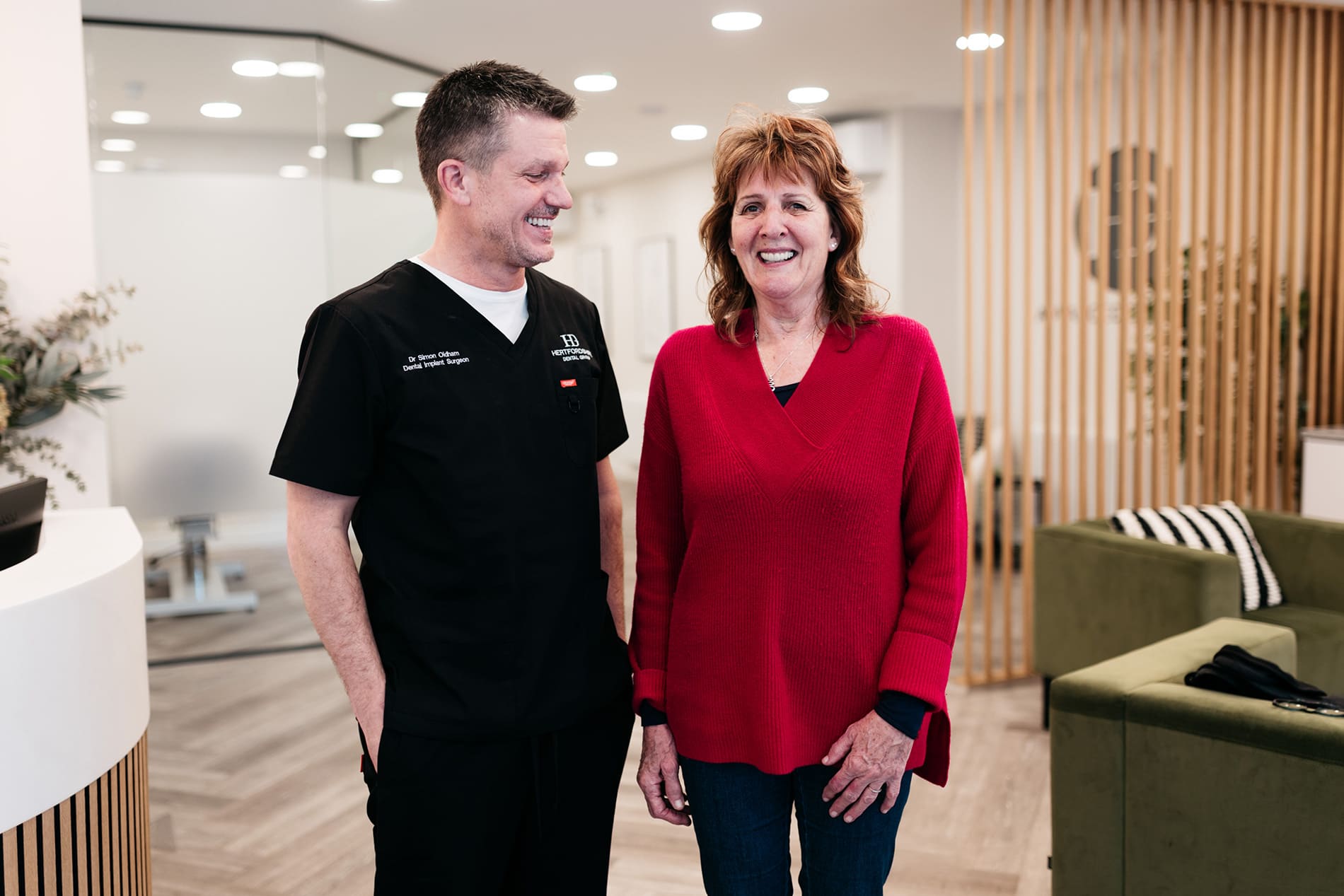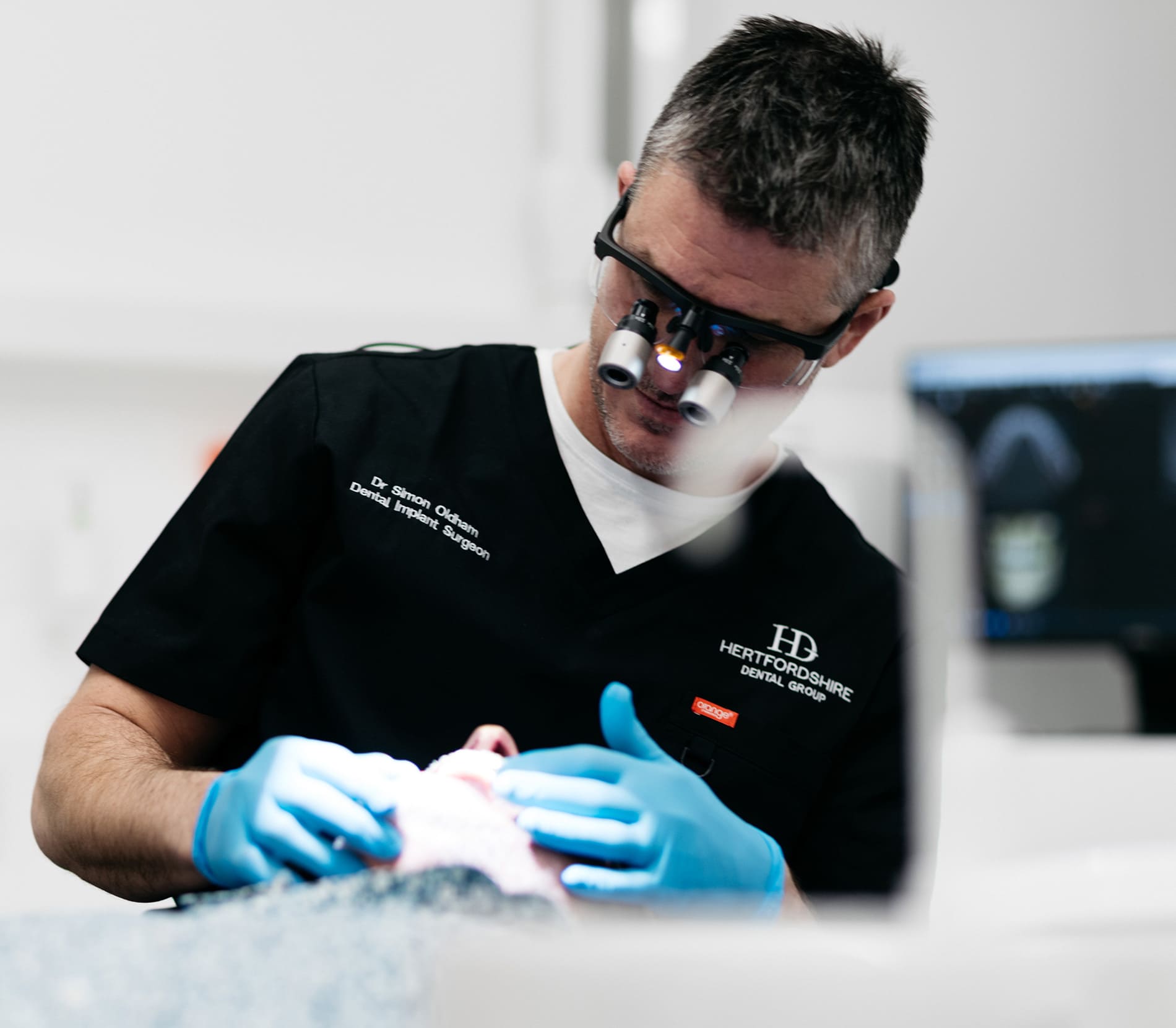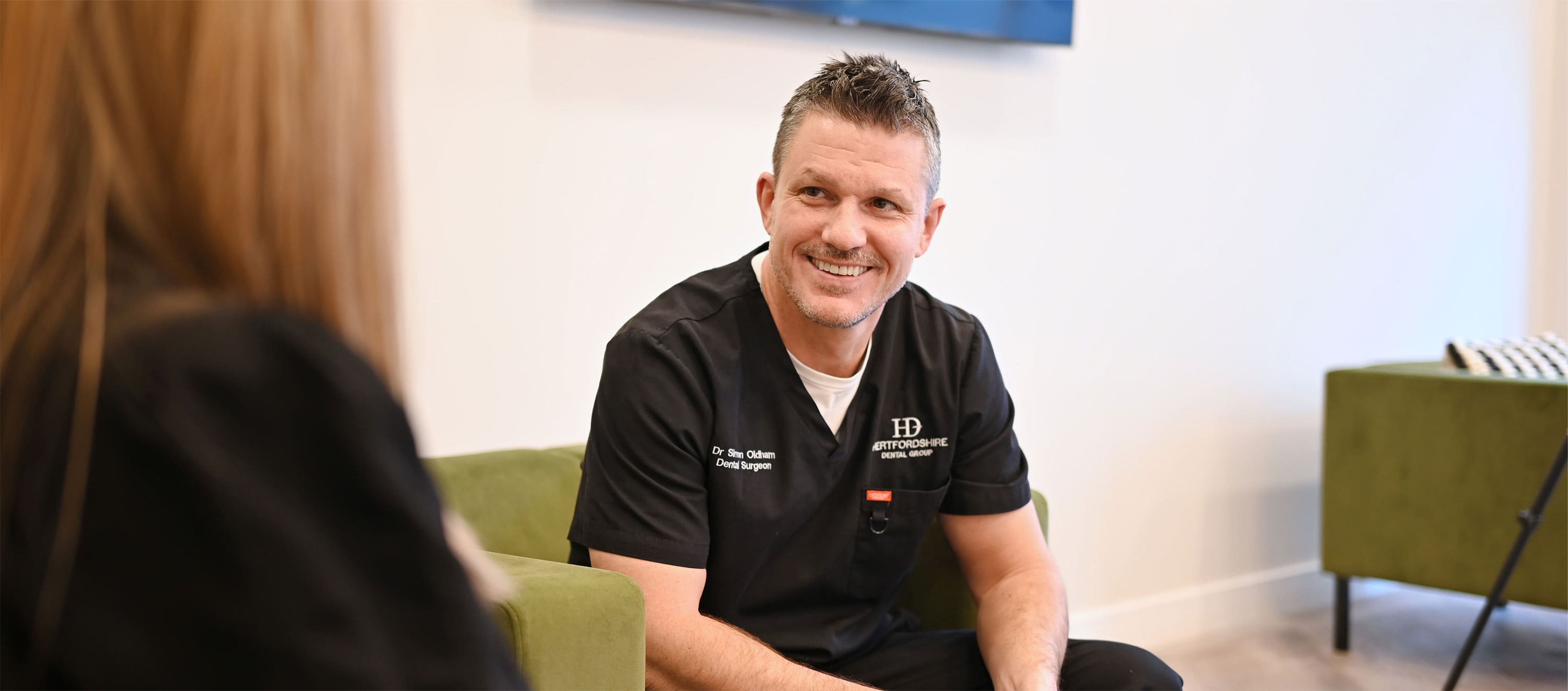Referrals
We are very happy to receive referrals for dental implant treatment, and frequently receive referrals for bone grafts and sinus lifts from other dentists across Hertfordshire. Whether you are a regular patient or coming to us for a specific treatment, we will provide you with first class care.

Bone grafts and sinus lifts
A safe and clinically proven procedure that can provide the most stable base for life changing implant surgery.
When you lose teeth, the jawbone can quickly start to shrink away, notably around the areas where teeth were lost, lacking the necessary tooth roots for stabilisation. Without this vital foundation, your face can take on a shrunken appearance.
For some patients, bone shrinkage becomes so extensive that it complicates the feasibility of undergoing dental implant treatment.
However, bone grafts and sinus lifts help to repair and rebuild lost bone. Bone grafts work by stimulating the regrowth of bone in your lower jaw, while sinus lifts add bone to the area between your upper jaw and the sinuses either side of your nose.
Restoring your jawbone health will provide optimum support for your teeth, gums, and dental restorations such as dental implants.

What causes bone loss?
When a missing bone is not replaced
Trauma, such as an accident or a sports injury
Periodontal (gum) disease, which degrades and diminishes the supporting bone around the teeth
Jaw tumours, which can attack the bone itself
However, the good news is that bone loss is not permanent. It is possible to encourage the growth of new bone with bone grafting, using biomaterials to stimulate the jawbone and produce new bone structure.
The benefits of bone grafts and sinus lifts
Restore areas of jawbone that have shrunk with age and tooth loss
Turn back the signs of ageing for a fuller, more youthful appearance
Create a solid base for dental implants
Replace missing teeth and improve your ability to bite and chew
Regain your confidence

